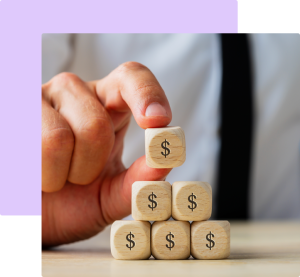In recent years, Buy Now, Pay Later (BNPL) has become a favorite way to shop for millions of people looking for more payment flexibility. Instead of paying everything upfront, it gives buyers the option to break a purchase into smaller chunks—usually interest-free if paid on time. For many, that simplicity is hard to resist.
But as more shoppers turn to this option, questions are starting to surface. Is it really a smarter way to manage money, or does it quietly lead people into debt? In this article, we’ll break down the benefits and the less obvious risks of Buy Now, Pay Later so you can make informed choices.
Understanding the Buy Now, Pay Later model

Buy Now, Pay Later lets you buy something now and pay it off over a few weeks. The setup is simple: you split your bill into four equal payments, often without fees or interest—as long as you pay on time. This short-term model feels lighter than a loan or credit card.
Big names like Affirm, Klarna, and Afterpay have teamed up with thousands of online stores. At checkout, shoppers can instantly choose BNPL with just a few taps—no waiting, no paperwork. And since approval is fast and easy, it’s now a default option for many Americans.
Why consumers are embracing BNPL
What draws people in is how easy and low-pressure it feels. You can afford something now and deal with the cost later—without feeling like you’re taking on debt. That flexibility makes BNPL appealing to anyone trying to stretch their paycheck.
It’s also far more accessible than traditional credit. Many BNPL services don’t run a full credit check, and the process feels more relaxed. No need to call a bank or fill out endless forms. That’s a big plus, especially for younger or first-time users.
The role of BNPL in changing spending habits
Breaking up payments makes big purchases feel smaller—and that can change how people shop. Something that seemed too expensive suddenly looks doable in four parts. It doesn’t feel like a splurge anymore, just another line in your budget.
That shift is great for retailers, who see bigger orders and more checkouts. But it comes with a downside: buyers often commit to more than they realize. One plan becomes two, then five, and suddenly you’ve got a calendar full of due dates.
Demographics fueling the BNPL boom
BNPL has caught on most with Millennials and Gen Z. These groups are used to fast, app-based services and don’t always love traditional banks. For them, BNPL is modern, clean, and frictionless—everything a credit card isn’t.
But it’s not just young people using it. Families managing tight budgets also rely on BNPL to space out payments, especially during the holidays or back-to-school season. It gives them breathing room, even if only temporarily.
The hidden risks of Buy Now, Pay Later for consumers
It’s easy to assume that BNPL is harmless—but that’s not always the case. When you’re juggling several purchases, it’s easy to forget what’s due when. One missed payment leads to a fee, which might seem small at first but adds up fast.
And while not every provider reports to credit bureaus, some do. That means a late payment could hurt your credit, especially if it goes unpaid for too long. It starts with convenience—but if you’re not careful, it ends in stress.
Lack of regulation and consumer protection
One big issue with BNPL is how loosely it’s regulated compared to credit cards. Each provider sets their own rules, and there’s no standard on how fees, disputes, or refunds are handled. That leaves you more exposed than you might think.
If something goes wrong—like a return or a damaged item—the process isn’t always smooth. You could still be responsible for the payments while sorting things out with the store. With limited protections, you’re often on your own to resolve the mess.
Psychological traps and overspending behavior
There’s a mental trick at play here. Paying in small pieces makes a purchase feel easier, even when it’s not a smart decision. You focus on that first payment, not the total cost or how many other bills are coming next week.
Over time, this can lead to overcommitting. It’s not just one order anymore—it’s five or six. They all felt affordable at checkout, but together, they stretch your budget thin. That’s when late fees—and stress—start creeping in.
Managing Buy Now, Pay Later responsibly
Used the right way, BNPL can help you manage cash flow without falling into debt. But it only works if you stay organized and mindful. Treat it like a short-term loan, not “free money.” Only commit when you’re sure you can cover the full cost.
It also helps to limit how many services you use at once. Juggling Klarna, Afterpay, and Affirm all at the same time can be confusing. Stick to one, track your payments, and avoid layering purchases if your income isn’t consistent.
Tracking your obligations to avoid pitfalls
Write down your due dates or use apps that send reminders. BNPL providers usually auto-charge your account, but it’s still your job to have the funds ready. Missing just one payment can trigger fees and throw off your budget.
Check your statements regularly so nothing slips past you. That quick pair of shoes you bought last month? It still needs to be paid. The more organized you are, the less likely you’ll get surprised when payments start stacking up.
Comparing BNPL to other financing options
BNPL sounds like a great deal, but it’s not always the best choice. Compared to credit cards or personal loans, it’s less flexible and can come with fewer protections. It’s great for short-term buys—but not if you’re trying to build credit or cover an emergency. Here’s how BNPL stacks up against other common financing tools in the U.S. today:
| Feature | Buy Now, Pay Later | Credit Card (Revolving) | Personal Loan (Average) |
|---|---|---|---|
| Interest (if paid on time) | 0% | 22.59% (average APR in 2025) | 12.49% (average APR in 2025) |
| Approval Process | Soft or no credit check | Full credit check | Full credit check |
| Payment Flexibility | Fixed short-term installments | Revolving credit line | Fixed long-term installments |
| Late Fees | Yes, varies by provider | Yes | Yes |
Each method has its pros and cons. BNPL is ideal for smaller purchases when you need a bit of flexibility. But for building credit, managing bigger expenses, or needing a fallback during emergencies, traditional options might serve you better.
Looking ahead: the future of Buy Now, Pay Later
Buy Now, Pay Later isn’t going anywhere. It’s becoming a standard checkout option in both online and physical stores. More financial companies are entering the market, and the competition is only making it more accessible.
But convenience comes with responsibility. As regulations evolve and more people adopt it, being an informed user matters more than ever. Used wisely, BNPL offers breathing room. Used carelessly, it can add pressure where you least expect it.



